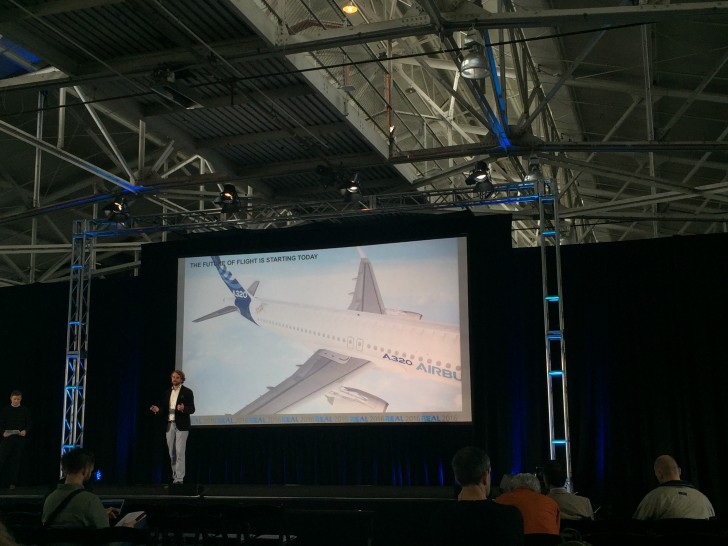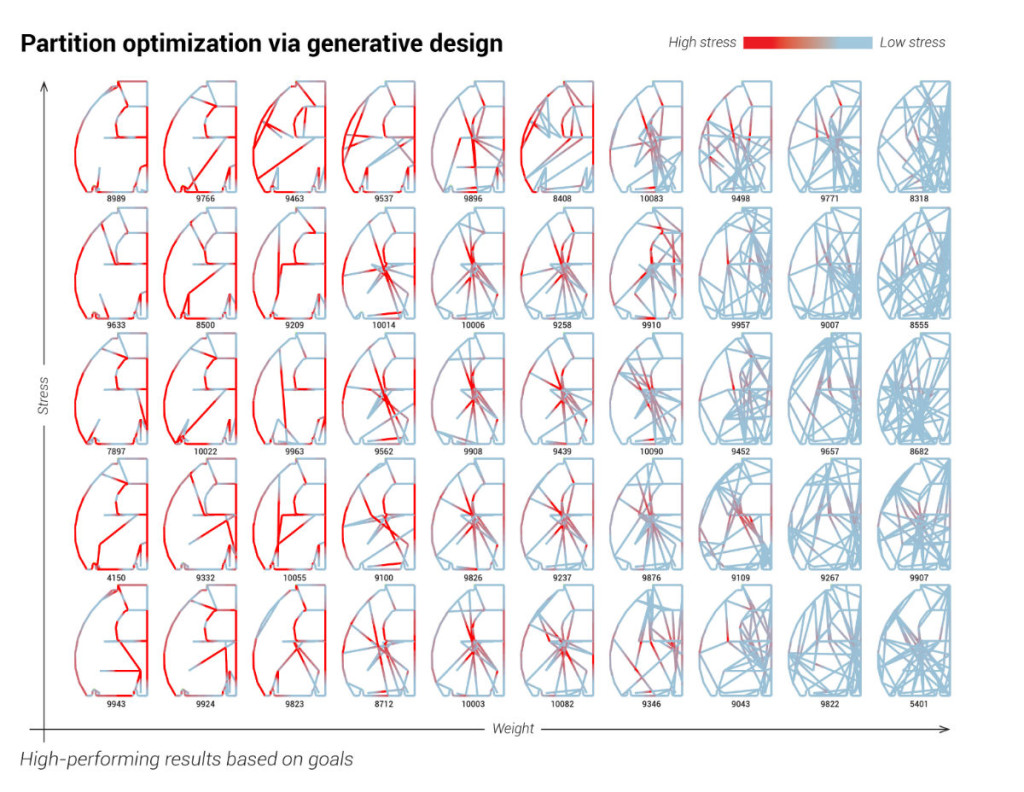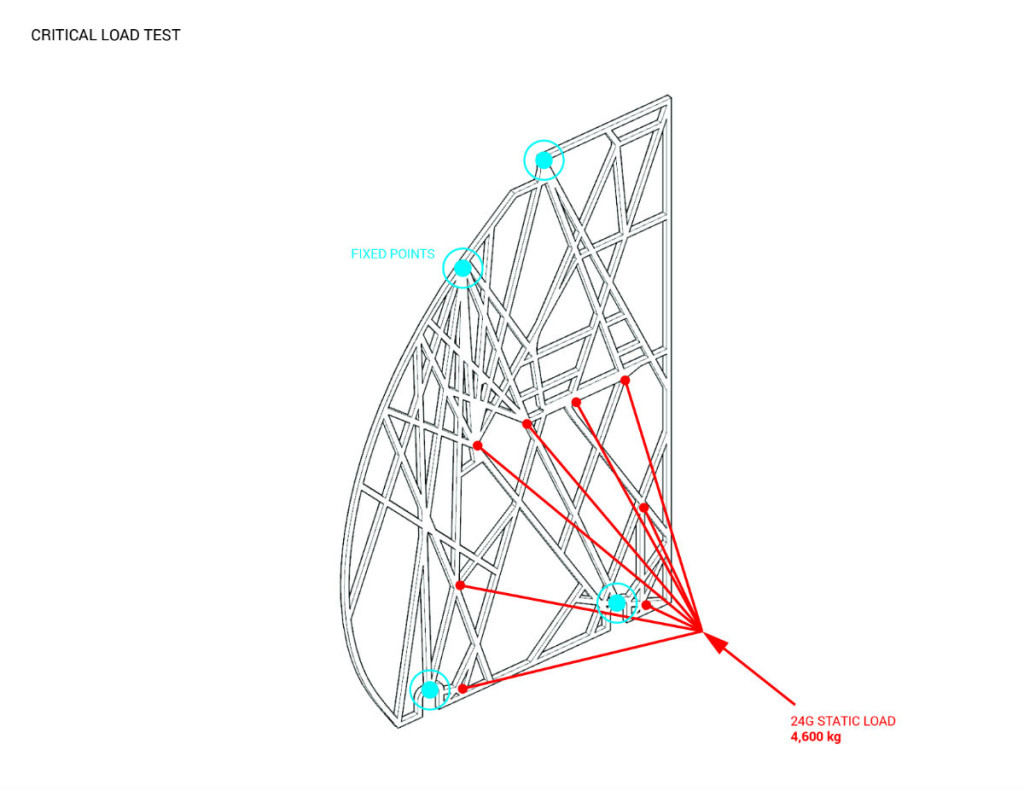Not many industries have felt the force of 3D printing technology quite like the aerospace industry. And outside of, maybe, General Electric, no company has utilized 3D printing as much as aerospace giant Airbus. During REAL 2016, I had the pleasure of sitting in on a keynote by Bastian Schäfer, Innovation Manager at Airbus, and David Benjamin, head of Autodesk Research’s The Living studio. Together, they discussed how computer generative design helps lead to efficient design. Up on the REAL Talk stage, Schaefer detailed the algorithm-driven process undertaken by Airbus and Autodesk to create a bionic partition for the Airbus A320.

The aim of the bionic partition project was to design a new aircraft partition that would both weigh less and offer more strength than existing partitions. In order to truly get an idea of what design would offer these two improved properties, Schafer turned to The Living, utilizing their expertise in generative design for architectural structures to help produce a mechanically sound ‘bionic’ partition. I had the opportunity to sit down and talk with Bastian Schäfer to learn a bit more about his job at Airbus, the development of the bionic partition, and how 3D printing technology and generative design are a match made in Reality Computing heaven.
Once Schäfer became the Innovation Manager of Airbus, he had been asked to design a bionic concept plane, which is where Airbus and Schäfer really began to take note of generative design. “One of the first tasks I had was this bionic aircraft, so we had the Airbus concept plane, and there was a lot of demand to know what the cabin looked like. We took the chance and created this bionic structure of the airplane and that was basically my first contact with generative design and topology optimization,” Schäfer said. “This story worked so well that the entire Airbus company started moving towards ‘bionic design’ as we call it, the combination of topology optimization or generative design combined with additive manufacturing.”
And, so, two of the essential pieces to Reality Computing were combined to help showcase their mutual benefit to one another. Intrigued by their first run-in with topology optimization, the Airbus team then set out to put some skin in the game, and used generative design to create an actual component. “It was quite a hard decision, we were looking for a component that is quite complex and, from our perspectives as engineers, was too heavy; that was the partition,” Schafer said. “This component is quite large, and it has to resist a lot of high loads, so it required a certain type of structural performance. The goal was to solve this with generative design.”

At the time, Airbus and Schafer were in close contact with Autodesk, who linked them with David Benjamin and the New York City-based The Living, an Autodesk Studio experienced with using algorithm-driven design to build full-scale functioning prototypes. The Living team was put in charge of ‘networking’ these designs together, using a cloud-based approach to help analyze each generative design of possible bionic partitions. Two algorithms were produced to create the bionic component, one to generate the seemingly endless supply of designs, and the other to help find the most efficient of the bunch. Setting certain parameters allowed the team to test the functionality of the generative designs without actually having to manufacture it, which eventually lead them to just a handful of partitions for for the aircraft.
“We basically took a second algorithm and combined it with this slime algorithm, which created this redundant network of inter connections, and added stability to the part. The first algorithm was required to build this network, and the second algorithm to make this network stable,” Schafer said.

The design itself was composed of the overall macro-structure and the inner micro-structure. In order to increase stability and decrease weight, a lattice was generated within the outer rod design, a complex structure that could only be made with 3D printing technology. “This can only be achieved through 3D printing,” said Schafer. “We put a lot of thought into the lattice, which is good in terms of optimization and also good in terms of manufacturing at the same time. One of our objectives was to create structures which do not require any additional supports inside the rod.” For material, Airbus turned to unique Scalmalloy metal-based powder, produced by their subsidiary APWorks. The Scalmalloy was a perfect fit for the project, since it has the lightweight properties of aluminum, but the toughness and material stability of titanium.
After we discussed the bionic partition in a bit more length, Schafer explained to me how Airbus looks at 3D printing technology as a whole. In fact, Airbus has about four different ways that their 3D printing technology is employed. The first, is to simply re-print components with DMLS printing for functional prototyping and end-use parts, which they are able to do quite efficiently with their advanced titanium material, for instance. The second is their idea of ‘bionic design’, which combines topology optimization and additive manufacturing for improved production. The third use is for tooling. For example, they’ve 3D printed tooling in titanium to help produce carbon fiber brackets. Lastly, Airbus utilizes 3D printing technology to produce spare parts on-the-spot, cutting the production and delivery time down greatly in comparison to traditional manufacturing methods.
Schafer acknowledges that, although 3D printing technology has become an integral part of the Airbus manufacturing process, the emerging technology still has some improvements to be made. But instead of waiting around for industrial 3D printers to improve themselves, Airbus is instead helping to push the envelope themselves.
“Were looking at all different types of printing processes, from fused deposition to selective laser melting. In Germany, we’re more focused on selective laser melting. Today, we are pushing the manufacturing of these machines to build bigger systems and build chambers, and to incorporate more lasers, because these are the main drivers to make the entire production more efficient,” Schafer added. “We are very close to breaking this wall and making this technology more efficient and redesigning our products for these larger printers.”




